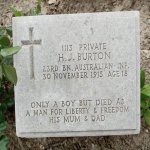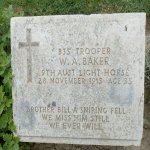To determine the usefulness of the CF-100 as a ground attack aircraft, bomb trials were conducted in 1954 at Malton. Aircraft 18105 was modified as a Mk.3 aerodynamically, and 14 bomb-dropping trips were flown over the Lake Ontario range. In all, twenty-one 1000 lb bombs were dropped and twenty 100 lb practice bombs. Problems encountered included bombs fouling each other when released, but the pilot's comments were favourable as far as performance went:
"Bomb dropping was satisfactory under conditions tested. Change of trim at moment of bomb or bombs release was small or negligible."
Bombs had been dropped at speeds between 230 and 550 mph.
The CF-100 was not developed any further in the bomb carrying mode. This was explained later in an Avro memo relating to the proposed STOVL (Short Takeoff and Vertical landing) CF-100: "At 27,000/30,000 lb. gross the CF-100 Mk.4 strength factor is about 7g limit. Between 10/12g limit is recommended for ground attack planes... Low strength factors and the cost incurred to correct the situation was one reason why the CF-100 ground attack proposal in 1954 was not developed."
























































































